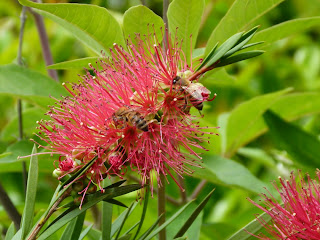Friday, 27 July 2012
The Reed Warblers on the Long Water near the bridge have a family. I saw and heard them moving around in the evergreen trees across the path from their reed bed, and had quite enough sight of them to be certain what they were. Their scratchy calls are much as you would expect after hearing the male Reed Warbler's harsh, clattering song.
A little farther up the lake, two Great Crested Grebes were enjoying a territorial fight when a couple of Coots thought it would be amusing to join in. The grebes gave up immediately, dived, and surfaced some distance away in their respective territories. Grebe fights look savage but are actually wresting matches in which no one gets hurt. The idea is to get a grip on the opponent and hold his head under water so that he submits (or her head: boths sexes fight, sometimes two on two). Coots fight to injure, so their intervention was spoiling the fun.
The Little Owl was calling repeatedly from a tree in the leaf yard. As usual, it remained invisible. But it is good to know that this elusive bird is still with us. There has been no sign of any family, but we would be unlikely to find out if there were one.
A pair of Moorhens nesting in a well hidden place in the reed bed below the Italian Garden have just hatched five chicks, and were feeding them on the edge of the filter under the ornamental fountain.
Here is a closer shot of a baby Moorhen's curious red and blue head. It is strange that newly hatched Moorhens have black feathers and red beaks but, as they grow larger, they change to shades of drab brown all over. When adult, they become black again and regain their red beaks.
And here two bees gather nectar from an Australian bottlebrush flower (Callistemon) near the Lido.
Subscribe to:
Post Comments (Atom)




Wonderful action photo of the struggle between the two Grebes! I've just discovered, or perhps recovered because I think you told me before, how to see the larger size versions of your photos. Great!
ReplyDelete